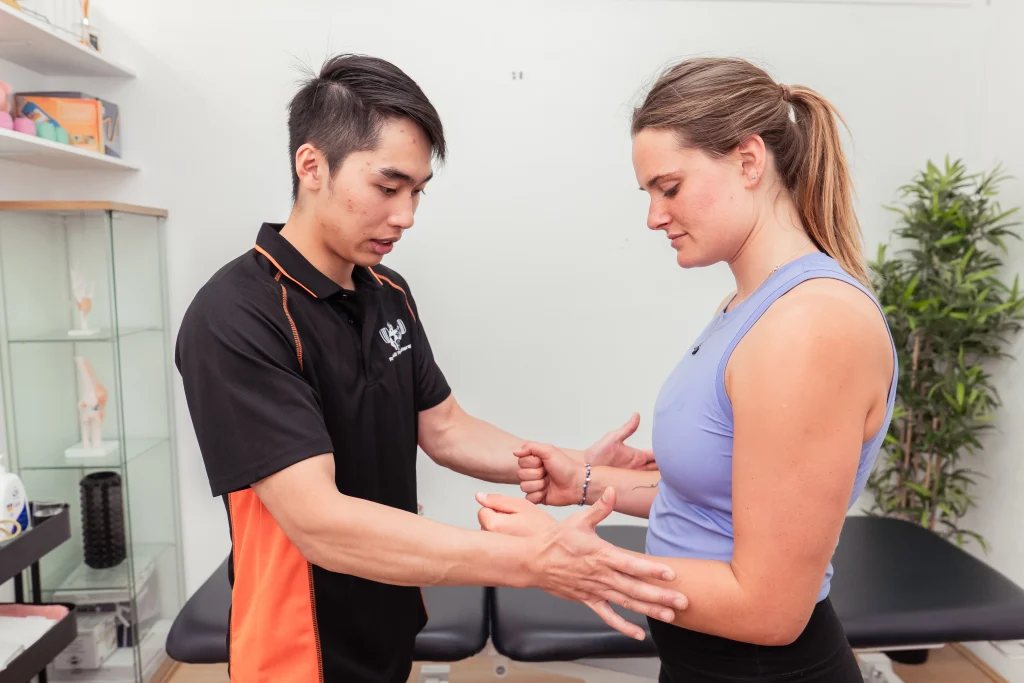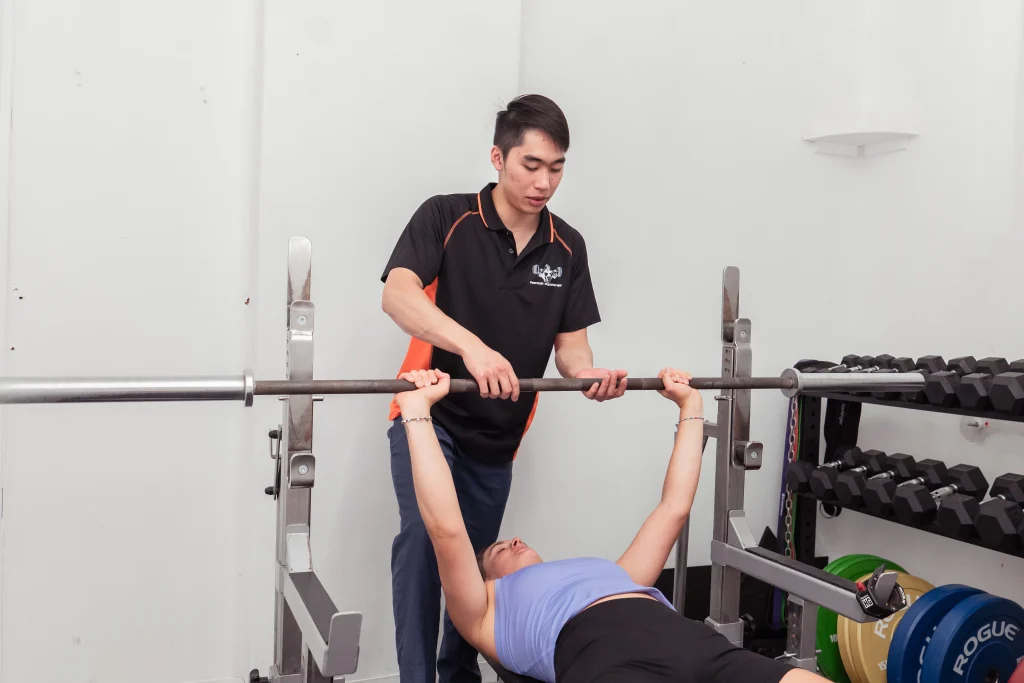
Rotator cuff injuries are one of the most common causes of shoulder pain we see in clinic. The rotator cuff plays a vital role in controlling and stabilising the shoulder during movement—so when it’s injured, even simple tasks like reaching overhead or lifting a light object can become uncomfortable or difficult.
Whether the issue is due to overuse, a tear, or age-related degeneration, rehab needs to focus on more than just symptom relief. Successful recovery involves restoring strength, control, and coordination through a progressive, structured plan that targets the shoulder’s deeper stabilisers as well as the surrounding muscle system.
Understanding the Rotator Cuff
The rotator cuff is a group of four muscles that sit deep around the shoulder joint:
- Supraspinatus
- Infraspinatus
- Teres minor
- Subscapularis
These muscles aren’t large, but they’re essential for shoulder stability. They keep the head of the humerus (upper arm bone) centred in the socket during movement. When the rotator cuff isn’t working properly—whether due to inflammation, strain, or a tear—other muscles tend to compensate, leading to altered movement patterns and ongoing discomfort.
Early Focus: Settling Irritation and Rebuilding Activation
Initial management depends on the type and severity of the injury. For more acute or painful presentations, early-stage rehab often focuses on:

- Reducing inflammation and protecting the shoulder from aggravating movements
- Regaining basic range of motion
- Re-activating the rotator cuff muscles in controlled, low-load positions
At this stage, exercises often involve isometric holds, supported arm movements, or closed-chain positions (e.g. hands on a wall or table), which allow muscle engagement without putting too much strain on the injured tissue.
Progressing Strength and Control
As pain settles, the focus shifts toward progressive strengthening and dynamic control. This includes:
- Targeted rotator cuff strengthening through resistance bands or light weights
- Scapular stability exercises, as the shoulder blade provides the foundation for efficient arm movement
- Integration with larger muscle groups (like deltoids and upper back muscles) to support functional movement
Progression is key. Exercises need to become more demanding over time—not just by increasing resistance, but by:
- Moving into less supported positions
- Adding rotational and overhead movements
- Increasing the speed and complexity of tasks
Restoring Functional and Sport-Specific Movement

Later in rehab, the goal is to transition from isolated control to movements that mimic everyday tasks or sporting demands. This might include:
- Overhead reaching and loading drills
- Plyometric or rebound exercises for athletes or active individuals
- Unpredictable or reactive drills to improve neuromuscular control
This stage is essential not just for full recovery, but to reduce the risk of recurrence. Many rotator cuff injuries happen due to poor coordination or fatigue during dynamic movements—so rehab needs to reflect the real-life demands placed on the shoulder.
Every Rotator Cuff Injury is Different
Some rotator cuff injuries are caused by a clear incident (like a fall), while others build up gradually over time. Some involve partial or full tears, while others are more about tendon overload or impingement. Age, activity level, and shoulder history all play a role.
That’s why no two rehab plans should look exactly the same. Your program should be tailored to:
- The specific muscles involved
- The movements you find difficult
- Your goals—whether that’s returning to sport, lifting at work, or simply sleeping comfortably again
Summary
Rotator cuff rehab is about more than just rest or stretching. It involves a step-by-step process of:
- Settling pain and reactivating the right muscles
- Building strength and control through progressive loading
- Returning to real-world movements with confidence
With the right plan, most rotator cuff injuries respond well to physiotherapy—often without the need for surgery. If you’re dealing with ongoing shoulder pain or struggling to get back to full function, book an appointment with one of our experienced physios. We’ll assess your shoulder, identify the root cause, and guide you through a tailored rehab program that gets results.

